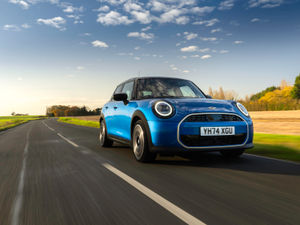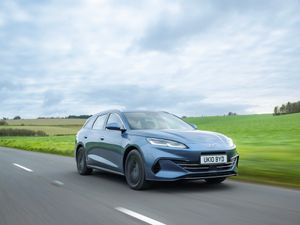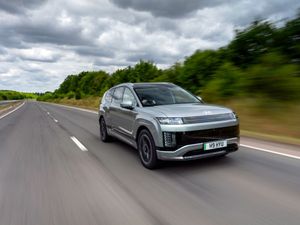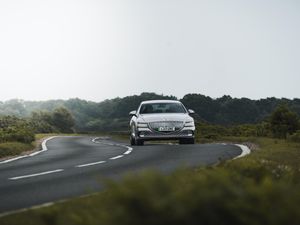UK Drive: Kia's great-value Rio is spacious and well-equipped but uninspiring to drive
Kia is back with the fourth generation of its Rio supermini. But competing in this busy market can be tough, especially when Ford’s Fiesta is the car of choice for many. Does the Rio have what it takes to compete? Ted Welford finds out.
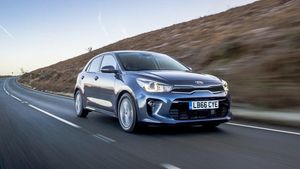
What is it?

The Rio is effectively Kia’s Ford Fiesta rival. While it might not be something you’ve ever heard of, it has actually been around for a fair few years. While not the obvious choice to many in the supermini market, alongside popular choices such as the Ford Fiesta, Vauxhall Corsa and Volkswagen Polo, it is worth considering just in terms of value for money.
It now gets Kia/Hyundai’s relatively new 1.0-litre T-GDi engine, offering 99bhp and 232Nm of torque.
What’s new?

Kia launched its new fourth generation Rio last year, giving it a fresh new look and increasing its size. As one of Kia’s best-selling cars, it is paramount that it got it right in the competitive supermini market.
It has received Kia’s now trademark front slim grille, and a raft of safety technology, allowing it to compete against rivals from Ford and Seat, which both launched new versions of their popular superminis last year. Smart new LED DRLs have also been added, while the infotainment system has been completely redesigned, accessible via a smart seven-inch touchscreen.
Unlike the last-generation car, it is now only available as a five-door.
What’s under the bonnet?

Our Rio test car came with Kia’s 1.0-litre turbocharged petrol engine. It’s a flexible engine, offering decent performance and low running costs, and ideally sized for new drivers.
It produces 99bhp and a beefy, for its size, 232Nm of torque. While it’s not fast, it can get from 0-60mph in 10.3 seconds and onto a top speed of 115mph. It’s paired with a five-speed manual gearbox.
As for running costs, Kia claims it will return 62.8mpg, while emitting 102g/km of CO2. However, like many of these small turbocharged engines, it’s difficult to get anywhere near the claimed fuel economy figures. After a 300-mile journey in it, and with steady driving, we struggled to get anywhere near 50mpg.
What’s it like to drive?

While it is by no means a bad car to drive, it’s pretty uninspiring. It has very light steering, which while ideal around town, does seem a bit too weightless elsewhere.
One of the best things about the Rio is how well it sits at motorway speeds. For such a small engine, it doesn’t feel strained at all even when sat at 70mph. It also rides well for the best part, with only potholes and hefty bumps threatening to ruin its smoothness.
Unfortunately, this is let down by the truly woeful tyre noise that makes its way into the cabin. While it doesn’t really make much different at town speeds, as soon as you are on the motorway it is unbearably loud.
How does it look?

The front of the Rio is smart to look at, with Kia’s distinctive “Tiger-Nose” standing out. The LED DRLs also help lift the look of the Rio, too, and are a smart touch.
Our test car came with 16-inch alloy wheels, which apart from the dreadful tyre noise, rode well. They don’t look the best, though, and appear quite small in the Rio’s arches, as well as having an unnecessarily fiddly design.
At the rear it is pretty dull to look at, and has hardly been altered from how the last model looked.
The absence of the three-door version doesn’t help its image, either.
What’s it like inside?

The cabin of the Rio is very well laid out, and everything is logically positioned. The seven-inch touchscreen also makes the Rio’s interior look fresh and modern, which it largely is.
It’s spacious too, with plenty of room up front and the rear should be big enough to seat two adults comfortably. While boot space is good, it’s let down by a high lip that makes getting any heavy objects in and out difficult.
There are some rather scratchy interior surfaces as well, particularly on the dash, which is where most manufacturers at least try and make an effort. The Rio, however, just has a very cheap plastic dash, which oddly contrasts with the upmarket image Kia tries to create with the faux leather upholstery.
What’s the spec like?

The Rio is an extremely well-equipped car that represents superb value for money. This top spec ‘3’ model might seem a bit expensive at £16,785, but considering what you get for the money, it’s a great deal.
As standard you get 16-inch alloy wheels, automatic lights and wipers, LED DRLs, cornering function lights and electric folding and adjustable mirrors.
On the inside you get faux black leather upholstery with front heated seats, a seven-inch touchscreen that includes satellite navigation, Apple CarPlay and Android Auto, rear parking sensors and a reversing camera.
On the safety front, it has autonomous emergency braking, lane departure warning and hill-start control. On our 300-mile snowy journey, though, the braking assist refused to work because of the snow blocking the sensors at the front.
Verdict

The Kia Rio is a great-value, well-equipped and spacious supermini. In top spec ‘3’, it is laden with all the equipment you’d ever need, and for that reason is the pick of the range. The 1.0-litre T-GDi engine is also fantastically capable on the motorway and around town.
However, it is let down by unforgiveable niggles such as a cheap and nasty dashboard, awful tyre noise and a rather uninspiring drive.
These issues make the Rio somewhat average in too many categories, and when rivals such as the Ford Fiesta, Seat Ibiza and Volkswagen Polo tick nearly every box, average is just not good enough.
FACTS AT A GLANCE
Model as tested: Rio 1.0 T-GDi ‘3’ Eco
Price: £16,785
Engine: 1.0-litre turbocharged petrol
Power: 99bhp
Torque (Nm): 232Nm
Max speed (mph): 115mph
0-60mph: 10.3 seconds
MPG: 62.8mpg
Emissions (g/km): 102
By Ted Welford


